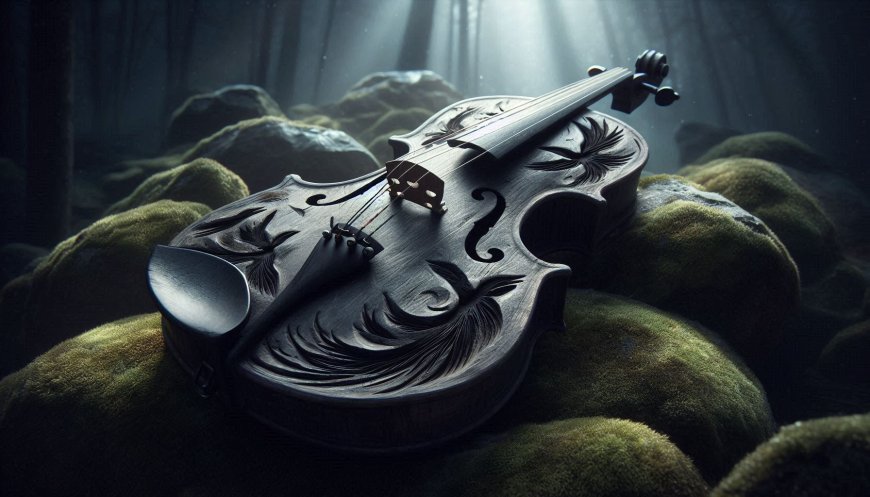The Blackbird Violin: Carving Music from Stone
Explore the enchanting concept of 'The Blackbird Violin,' a unique musical instrument carved from stone, intricately designed with blackbird motifs. Discover the harmony of nature and artistry in this captivating fusion.

Violins have long been the epitome of refined craftsmanship, meticulously crafted from carefully selected woods to produce sounds that stir the soul. But what if the traditional material for this revered instrument was turned on its head? Enter the Blackbird Violin, a groundbreaking creation that challenges centuries of musical tradition. Made not from wood, but from stone, this remarkable instrument transcends the boundaries of what we thought was possible in the world of music.
A Stone Violin: The Birth of the Blackbird
The Blackbird Violin, carved from black diabase, a volcanic stone, dares to challenge our preconceptions about what a violin should be. Traditional violins owe much of their sound to the natural resonance of wood, but stone presents an entirely different set of challenges. Dense and rigid, stone doesn’t have the same acoustic properties that make wood the material of choice for string instruments. Yet, in the hands of visionary Swedish artist Lars Widenfalk, the impossible became a reality.
Widenfalk’s creation is based on drawings by Antonio Stradivari, the master luthier behind the famed Stradivarius violins. However, the Blackbird required special modifications to adapt the stone to the demands of a musical instrument. Named after both its dark color and the bird known for its beautiful song, the Blackbird Violin merges art and functionality in a way that is as stunning as it is revolutionary.
Resonance in Stone: A New Sound Emerges
The most pressing question about the Blackbird Violin is, of course, how does it sound? Can stone really compete with the rich, warm tones of wood? The answer lies in the unique properties of the material itself. The dense stone gives the Blackbird a distinct sound profile—one that is crisp, clear, and rich in tonal depth. The notes it produces are hauntingly beautiful, with a clarity that sets it apart from its wooden counterparts.
Where traditional violins rely on the vibrations and resonance of wood to project sound, the Blackbird employs precise craftsmanship to overcome stone's limitations. Its sound is different, yes, but not in a way that detracts from the experience. Instead, the stone’s natural characteristics imbue the music with a fresh, almost ethereal quality, offering players and listeners alike a new auditory journey.
A Masterpiece Beyond Music
The Blackbird Violin is not just a musical instrument; it is a work of art. Widenfalk’s approach wasn’t solely about creating a playable violin, but about pushing the boundaries of craftsmanship and material. The natural patterns and textures of the stone make the Blackbird visually striking, a masterpiece in its own right. The instrument’s surface is a mosaic of dark, intricate veins, reminding us of nature’s inherent beauty—an unexpected marriage of art and music.
Reimagining the Future of Musical Instruments
Does the success of the Blackbird mean that we’ll soon see entire orchestras filled with stone cellos, marble pianos, or granite flutes? Perhaps not just yet. But the creation of the Blackbird Violin suggests that the materials we consider unconventional today may find their way into concert halls in the future. It stands as a testament to human ingenuity and the belief that music, like all art forms, has no fixed boundaries.
The Blackbird Violin challenges us to think beyond tradition, to embrace innovation, and to recognize that even the most unyielding of materials can, with enough imagination, be transformed into something capable of producing beauty. This stone violin sings a song of possibility—an ode to the limitless potential of human creativity.
What's Your Reaction?






































































































